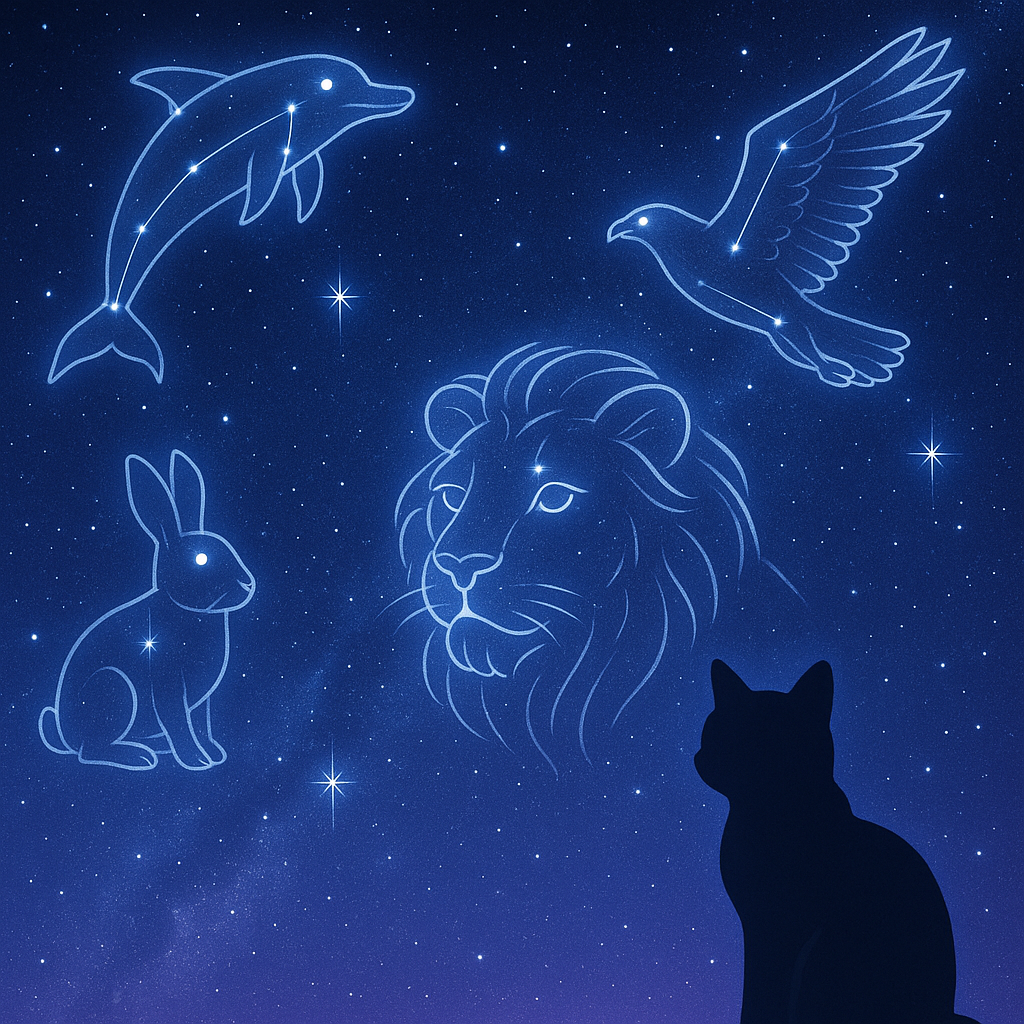1. 별자리 속 숨은 동물들
밤하늘을 올려다보면 단순한 점들이 아니라, 수천 년 동안 사람들의 상상과 이야기가 담긴 그림이 펼쳐진다. 그중에서도 사자자리, 물고기자리, 독수리자리처럼 동물의 형상을 한 별자리는 고대인들의 관찰과 상징이 녹아 있다. 천문학자들은 이 별들이 실제로는 수십, 수백 광년 떨어져 있지만, 지구에서 보면 한 무리로 보이는 이유를 과학적으로 설명한다.
2. 별과 동물의 연결고리
고대 항해자와 농부들은 별자리를 계절 변화와 날씨 예측에 활용했다. 예를 들어, 전갈자리가 떠오르면 여름이 절정이라는 신호였다. 동물들은 그 계절에 맞춰 먹이 활동과 번식을 조절했고, 사람들은 이를 관찰하며 동물과 별자리의 관계를 자연스럽게 이해했다.
3. 우주를 나는 새, 독수리자리
독수리자리는 은하수 한가운데에서 빛난다. 고대 그리스 신화에서는 제우스의 심부름꾼 독수리로 묘사되었지만, 현대 천문학에서는 별의 진화 단계를 연구하는 중요한 관측 지점이기도 하다. 이 별자리 속 알타이르는 여름 대삼각형의 한 축을 이루며, 실제로 지구에서 16광년 떨어져 있다.
4. 바다를 품은 고래자리
고래자리는 가을 밤하늘을 장식하는 거대한 별자리로, 실제로 88개 국제공인 별자리 중에서도 가장 크다. 과거에는 항해의 수호신처럼 여겨졌고, 바닷속 생물의 힘과 인내를 상징했다. 현대 천문학에서는 이 영역에서 수많은 외계 행성과 은하를 관측할 수 있어 ‘우주의 바다’라 불린다.
5. 지구 생태계와 별자리의 리듬
별자리의 위치와 계절 변화는 동물의 이동 경로, 번식 시기, 먹이 사냥 패턴과도 연결된다. 철새의 이동 시기는 별빛과 태양 위치에 영향을 받으며, 바다거북은 달빛과 별빛을 참고해 바다로 향한다. 이런 관찰은 생태학과 천문학이 맞닿아 있음을 보여준다.
6. 현대 천문학이 밝힌 진실
천문학자들은 별자리 속 별들이 실제로는 물리적으로 연결되어 있지 않다는 사실을 밝혀냈다. 하지만 인간의 상상과 문화 속에서, 이 별들은 여전히 하나의 ‘동물원’을 구성한다. 과거의 신화와 현대 과학이 공존하는 셈이다.
7. 나만의 밤하늘 동물원
맑은 밤, 별자리를 찾아보며 나만의 동물원을 만들어보자. 스마트폰 앱으로 현재 위치에서 보이는 별자리를 확인하고, 각 동물의 이야기를 찾아본다면 하늘은 더 이상 멀고 낯선 공간이 아니다. 별빛 속에서 동물과 우주가 이어지는 놀라운 연결고리를 발견할 수 있다.

🪐 Night-Sky Zoo — The Secret Life of Animals in Astronomy
1. Animals Hidden in the Constellations
Look up, and you won’t just see stars—you’ll see a menagerie drawn by human imagination. Ursa Major (the Great Bear), Delphinus (the Dolphin), Lepus (the Hare), Aquila (the Eagle), Leo (the Lion)… For millennia, cultures connected star-dots into creatures and myths, turning the sky into a living field guide. The stars didn’t change; our stories did. That’s why the “zoo” looks different depending on where—and when—you stand on Earth.
2. A Seasonal Map of Creatures
Constellations double as a calendar. In the Northern Hemisphere, Leo dominates spring nights; to ancient farmers, Leo’s rise signaled planting time. Winter crowds the sky around Orion with Taurus and Gemini—mythic beings flanked by very real seasonal cues. For navigators, these patterns were waypoints; for astronomers, they’re still practical signposts for planning observations. Same sky, two jobs: myth and method.
3. What Astronomy Really Sees
A constellation isn’t a physical cluster but a line‑of‑sight coincidence: Altair in Aquila is only ~17 light‑years away, while other “Aquila stars” sit hundreds or thousands of light‑years behind it. Our brains love patterns, so we draw lines between unrelated suns and meet an eagle. Modern astronomy keeps the names but measures the realities—positions, distances, spectra—using the celestial coordinate system. The result: enduring animal stories pinned to very non‑storylike data.
4. Animals as Night-Navigation Pros
Birds and turtles don’t read star charts—they embody them. Migratory birds use stellar cues and the Milky Way’s band to set headings; sea turtles combine moonlight, polarization, and Earth’s magnetic field for ocean crossings. Long before GPS, nature ran a sky‑based navigation mesh. The lesson is deliciously humbling: “animal astronomy” was field‑tested eons before humans wrote it down.
5. Conservation from Orbit
Space telescopes don’t just stare at galaxies; satellites track Earth’s heartbeat. Night-sky brightness maps reveal light pollution that disrupts nocturnal wildlife. Polar satellites record sea‑ice loss that squeezes polar bears’ hunting grounds. High‑res imagery counts penguin colonies by guano stains, follows elephant corridors through forest gaps, and maps whale migrations via ocean color. Tools built to study the universe now safeguard the creatures under our own sky.
6. Cats, Moonlight, and the Backyard Planetarium
Domestic cats are crepuscular, most active at dusk and dawn. On bright‑moon nights, feral cats hunt wider ranges; the same moon that pulls tides tweaks behavior. If you’ve ever caught your cat parked in a window, tracking the Moon like a tiny astronomer—yeah, that’s the wild still whispering. Small scene, big cosmos.
7. Why the Sky Zoo Still Matters
The animal‑rich sky is a bridge between cultures, centuries, and disciplines. It’s a storybook (myth), a clock (seasonal timing), a compass (navigation), a lab (data), and lately a conservation dashboard. Keeping the creature names doesn’t make astronomy less scientific; it makes science more human. We remember better when the data has a face—be it a lion’s mane or a swan’s wing.
SEO keywords: astronomy and animals, animal constellations, Leo constellation, Aquila Altair, Milky Way navigation, bird star navigation, sea turtle moonlight, satellite wildlife tracking, light pollution wildlife, night‑sky myths and science
#밤하늘동물원 #천문학 #별자리 #동물과별 #우주이야기 #밤하늘관찰 #천문학비밀 #동물별자리 #별관측 #우주동화